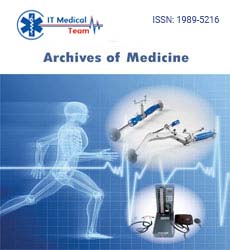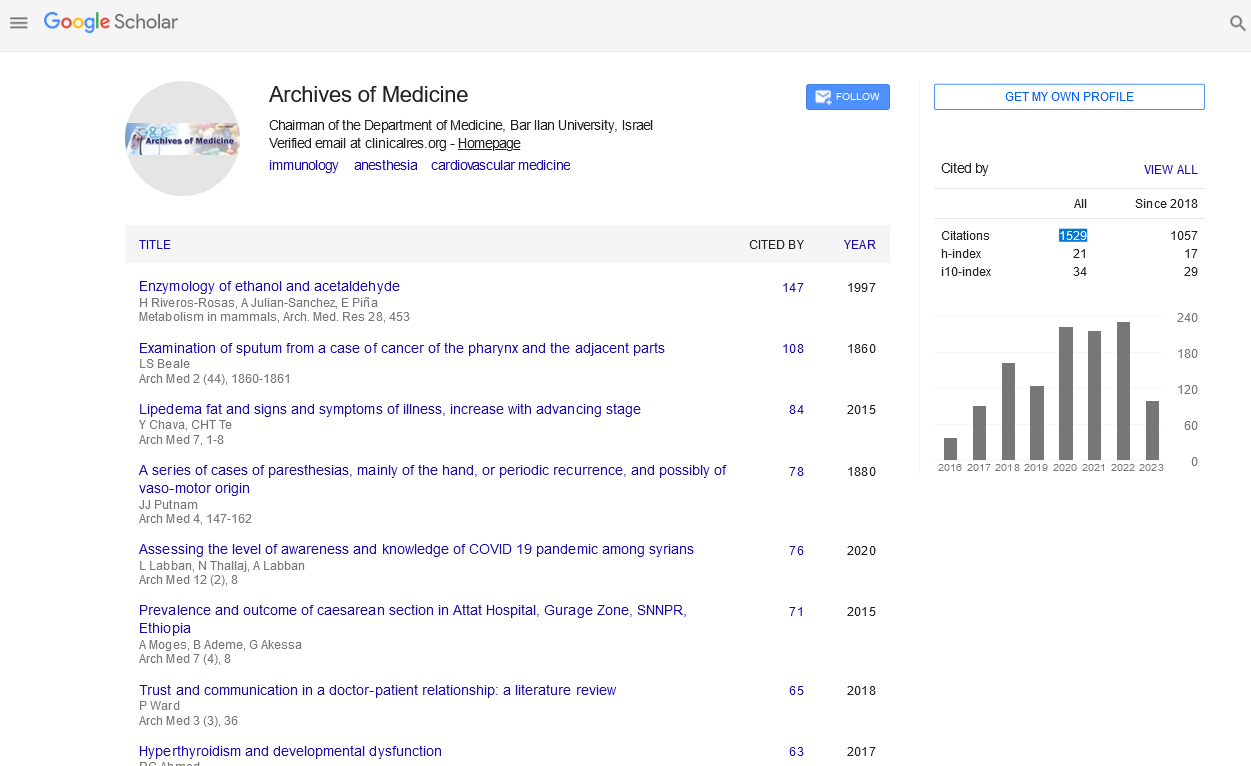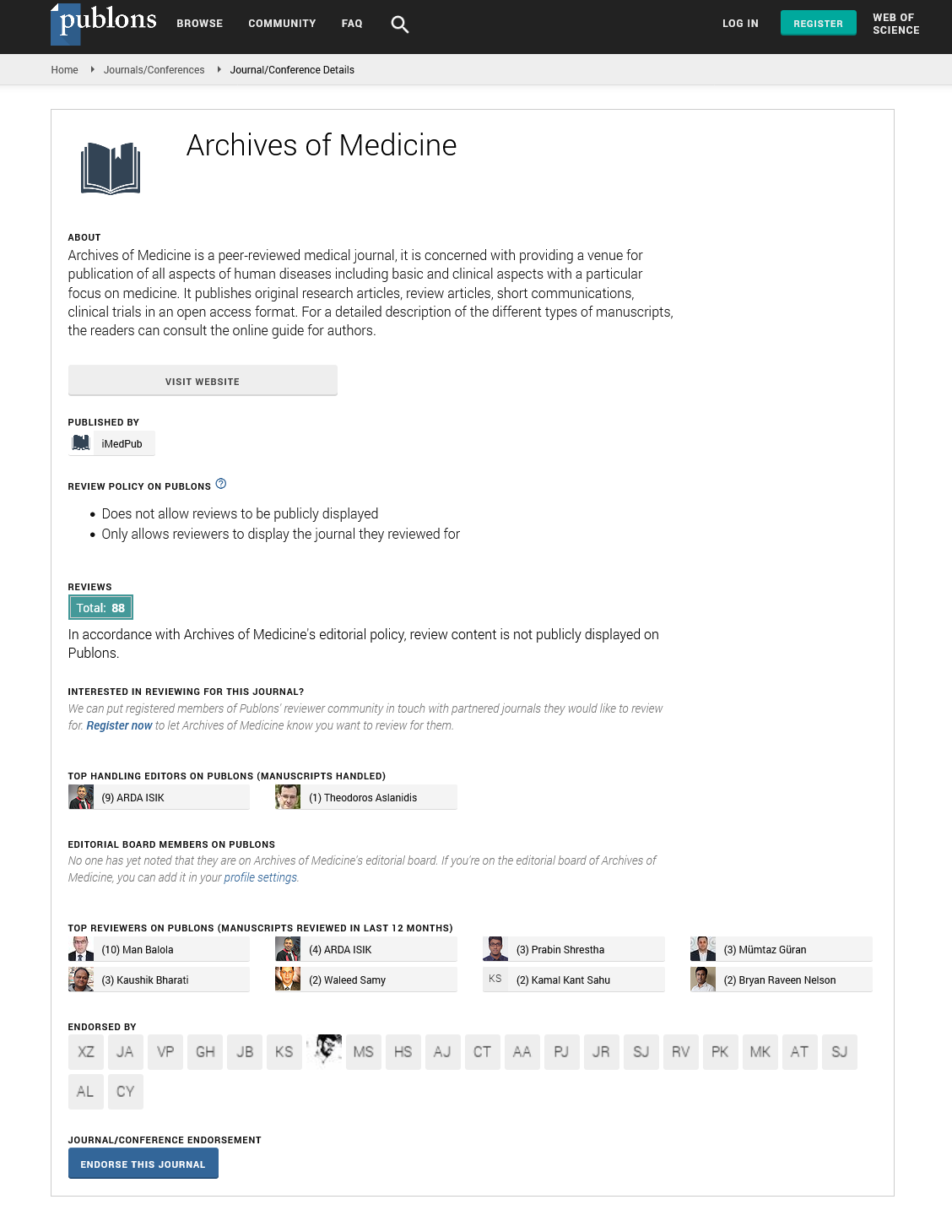Review Article - (2023) Volume 15, Issue 5
Viability of another ayurvedic drug for treating wounds
Varashree Suryakanth*
Department of Biochemistry, Kasturba Medical College, Manipal, Manipal Academy of Higher Education, Karnataka, India
*Correspondence:
Varashree Suryakanth, Department of Biochemistry, Kasturba Medical College, Manipal, Manipal Academy of Higher Education, Karnataka,
India,
Email:
Received: 02-Aug-2023, Manuscript No. ipaom-23-14121;
Editor assigned: 05-Aug-2023, Pre QC No. P-14121;
Reviewed: 25-Aug-2023, QC No. Q-14121;
Revised: 01-Sep-2023, Manuscript No. R-14121;
Published:
08-Sep-2023
Abstract
In the domain of medical procedure, wound mending is a significant
issue since it requires effortless recuperation. The objective of the
board is to hurry mending and stay away from disease. Wounds
and their consideration certainly stand out from Acharya Sushruta.
Various disinfectants that forestall disease are frequently utilized,
but they have no impact in accelerating the recuperating system and
are cytotoxic, which damages wound mending. To assess intense
cutaneous poisonousness and wound-mending viability, Pentabark
Kashaya (PK), a novel polyherbomineral definition, was made.
Keywords
Pentabark kashaya; Ayurveda; Dermal toxicity; Wound
healing
Introduction
Around the world, injuries are a significant reason for
grimness and studies have shown that for each million
patients, very nearly 10,000 will die from microbial
diseases. Interruption of commonplace physical designs
and capability is alluded to as a "injury." As per studies,
horrendous injuries influence 5 million individuals every
year. Vrana (wound) is concurred a definitive need by
Acharya Sushruta, who portrays it as an injury that disturbs
shareeradhatu (body tissues), leaves a scar after ropana
(recuperating) and endures till death. He has given nitty
gritty portrayals of vrana arrangement, sadya-asadyata
(forecast) and treatment, underscoring the need of wound
care [1]. The essential objectives of wound care are to
forestall contamination and hurry the mending system.
Effective antimicrobial dressings like those containing
povidone iodine, soframycin and silver are utilized to
achieve these objectives.
Literature Review
The regular course of mending an injury essentially
relies upon tissue recovery. The objective of wound
administration is generally to accelerate the mending system
while bringing down risk factors like contamination, which
have an immediate bearing on it. Concentrates on in this
space utilize different restorative plants with characteristics
that advance injury mending. To ensure the wellbeing of
Pentabark Kashaya, an exploration of intense cutaneous
poisonousness was led before the item's capacity to advance
injury recuperating in guinea pigs.
Invigorating male three gatherings of six Wistar rodents,
gauging somewhere in the range of 150 and 200 gm each,
were shaped by separating the complete populace. Bunch
1 filled in as the benchmark group, Gathering 2 as the
experimental group that got PK treatment and Gathering
3 as the Standard gathering that got 5% Povidone iodine
arrangement treatment [2].
Extraction wound creation: Utilizing the Morton and
Malone extraction twisted model as an aide, the creatures'
extracted wounds were made. The rodents' dorsal hair was
cut with an electric razor. A 2.5 cm engrave was made
using a roundabout seal on the dorsal interscapular region
while the patient was under gentle ether sedation. A round
locale of 2.5 cm in breadth and 2 mm top to bottom of
full thickness skin was eliminated along the engraving. The
creatures were kept in discrete enclosures while the injury
was followed on the polythene sheet.
Assessment of how much Kashaya required for
application: A piece of bandage weighing around 400 mg was gathered and Kashaya was dropped onto it utilizing
a dropper. For the cloth to totally retain, 6 drops were
sufficient.
Constant injuries have spread like a plague and are
hard to treat all over. Ongoing injuries have a terrible
visualization and, if untreated immediately, can rapidly
bring about removal or even demise. In spite of the way that
this ailment is old, there are still no dependable therapies
for constant injuries. Here, we propose and introduce a
fresh out of the box new mix treatment that consolidates
natural debridement with foundational microorganism
treatment. The two techniques consolidated will without
a doubt turn into a possible helpful methodology with the
characteristics of broad source, natural insight, security and
high viability, despite the fact that a few subtleties should
be worked out before formal application [3].
The primary thing that keeps wounds from mending
regularly is wound disease. The presence of necrotic tissue
and the burst of the hindrance keeping microbes from
entering the injury cause disease. Swab tests to decide the
microbial heap of the injury were finished on days 1, 3
and 12 and demonstrated a consistent decrease altogether
bacterial burden and complete parasitic consider contrasted
with the benchmark group (13, 24 and 27 cfu/ml,
separately). This could be because of the PK's antibacterial
properties, which help to lay out the injury's defensive
boundary [4].
Discussion
PK showed a continuous decline in the microbial weight over the span of treatment, exhibiting the definition's
viability in bringing down the microbial burden and
subsequently restricting contamination and advancing
injury mending. Watery Panchavalkala remove is accounted
for to have antibacterial properties, which diminishes
wound seepage, smelliness and bog [5,6]. PK has shown
antibacterial movement against various gram-positive and
gram-negative microbes, including Staphylococcus aureus
at a centralization of 50 g/ml in the plate dissemination
technique and a MIC of 0.8 g/ml, E. coli at a convergence
of 25 g/ml in the circle dispersion strategy and a MIC
of 3.12 g/ml and Pseudomonas aeruginosa at a Copper
sulfate, or "tuttha," displays antimicrobial viability against
microorganisms that are impervious to a few medications.
Conclusion
When utilized topically, Pentabark Kashaya showed no
side effects of skin hurt. As far as evaluation measurements
such twisted constriction rate, epithelialization time,
wound disease, wound conclusion day and histo-obsessive
modifications, PK shown a significant improvement. The
exploration shows the security, viability and openness of
Pentabark Kashaya as a substance for wound mending.
Acknowledgement
None.
Conflict of Interest
None.
References
- Tang Y, Zhang MJ, Hellmann J, et al. Proresolution therapy for the treatment of delayed healing of diabetic wounds. Diabetes. 2013;62(2):618-27.
Google Scholar, Crossref, Indexed at
- Qi X, Huang Y, You S, et al. Engineering robust Ag‐decorated polydopamine nano‐photothermal platforms to combat bacterial infection and prompt wound healing. Adv Sci. 2022;9(11):2106015.
Google Scholar, Crossref, Indexed at
- Mirza RE, Fang MM, Ennis WJ, et al. Blocking interleukin-1β induces a healing-associated wound macrophage phenotype and improves healing in type 2 diabetes. Diabetes. 2013;62(7):2579-87.
Google Scholar, Crossref, Indexed at
- Wong SL, Demers M, Martinod K, et al. Diabetes primes neutrophils to undergo NETosis, which impairs wound healing. Nat Med. 2015;21(7):815-9.
Google Scholar, Crossref, Indexed at
- Cheng S, Wang H, Pan X, et al. Dendritic hydrogels with robust inherent antibacterial properties for promoting bacteria-infected wound healing. ACS Appl Mater Interfaces. 2022;14(9):11144-55.
Google Scholar, Crossref, Indexed at
- Berger AM, Grem JL, Visovsky C, et al. Fatigue and other variables during adjuvant chemotherapy for colon and rectal cancer. Oncol Nurs Forum 2010;37(6).
Google Scholar, Crossref, Indexed at






